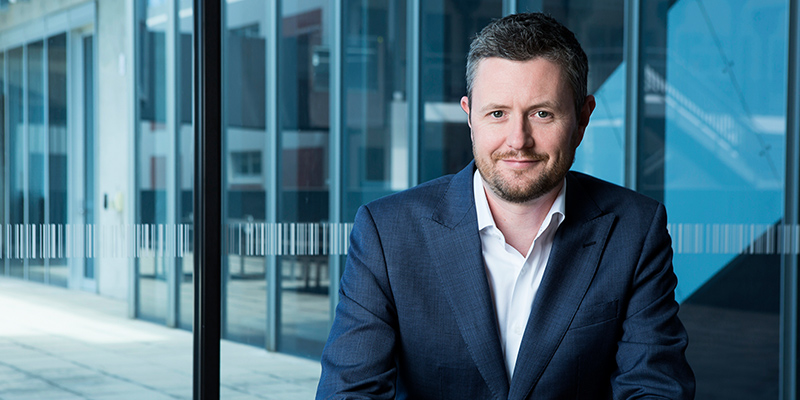From the Vice Chancellor
 INSIDE UNISA
INSIDE UNISA“We came, we saw, we kicked its …” has always been one of my favourite lines from Ghostbusters. The original one. Not the Real Ghostbusters though, that was a cartoon spin-off in the late 1980s and they didn’t say that kind of thing on primetime TV. I digress. It’s a triumphant expression uttered by the conquering heroes, who’ve undertaken a challenging task in uncharted territory, against the odds, with unlicensed nuclear accelerators strapped to their backs – and they’ve won the day. A bit like our volunteers who participated in what was not unijam3. But without the ghosts. Or nuclear accelerators. But otherwise almost exactly the same.
Over three separate days on the fringe of graduations, we brought together more than 700 volunteers in Pridham Hall, a building that owes its very existence to the co-creative processes we so readily embrace in UniSA and we once again embraced those self-same co-creative processes to explore future program-focused structures for the University. Lots of them. The output from this exercise is unlikely to deliver a multi-function sports, cultural and events facility, but it will unquestionably shape the future of our institution.
My role in the event was as Basil Exposition. Providing the background, the why, the how we would approach and manage things in a program-focused institution with a new academic structure. I only got to make one Star Trek joke. Then I handed over the reins to the participants. Free rein to brainstorm, to challenge, to build and rebuild and to articulate any number of possible future academic unit compositions for UniSA, engineered around our programs and their complementarity.
If you weren’t there, you won’t quite fathom what the seven deadly sins or activewear and pocket protectors or things that end with the syllable ‘ate’ or song lyrics from the 70s and 80s have to do with university organisational structures, but they do. And they made sense. They spoke to innovation and creative thinking – not embedded in curriculum, but emanating from the participants. It was ok to be a traditionalist, it was ok to be a radical. Neither had primacy. The radicals might have come up with more unusual (catchier?) names for the structures they envisaged. But by and large, everyone was on the same page. Across more than 100 iterations, our staff have conclusively shown that it is possible to put ‘as is’ to one side and to openly contemplate multiple iterations of ‘to be’. To contemplate it not through a lens of anarchic change, but through logical transformation which builds on the very best of us. Constructively. Meaningfully. With an eye on future careers and what makes UniSA stand out from its peers as a University of Enterprise. With an eye on delivering something that has the minimum impact on the maximum number of people, but which affects a meaningful reduction in the number of silos in our organisation and which will ultimately inform and reshape the professional services that support the academic enterprise.
What’s next? Well, just like a unijam, we will spend a couple of weeks sifting through the outputs from the tables, collating, mapping and mining. Looking at the innovations and importantly, looking at the consensus that emerged across the board. Inculcating that with the work done by the senior staff and their working groups, and by the University Council itself – they too had a go at this – which now means we have had something like 900 staff have input into our structural future. Then looking at the Venn diagram of suggested future structures and exploring the intersection of the sets. That’ll give us our future foundation.
Senior Management Group (SMG) will build that into a proposal to Council, which we will present for their review in June. And then we will see how best to make it a reality.
In the interim, the output will all appear on the Enterprise25 website in the next week or so, so that, if you weren’t there, you can still catch a glimpse of UniSA’s cultural secret sauce in action – our staff, doing what they do best, working together, collegially, outside the square, for the betterment of our university and those we serve.
Professor David Lloyd
Vice Chancellor and President
Other Stories
- How many cups of coffee increase your risk of high blood pressure, heart disease?
- The art of the circus: Cartwheeling kids to better mental health
- Engineering students’ future careers through upgraded facilities
- World Solar Challenge to test new energy strategy for solar industry
- From the Vice Chancellor
- Achievements and Announcements
- Are you getting enough sleep?
- How your brain can fake pain
- Australia’s ‘watergate’: here’s what taxpayers need to know about water buybacks
- Exceptional achievements acknowledged in first graduations of 2019
- Cancer researchers join bike tour pedalling towards a cure
- Defence and the bench: the cause of dwindling football scores
- The latest books from UniSA researchers
- In Pictures




